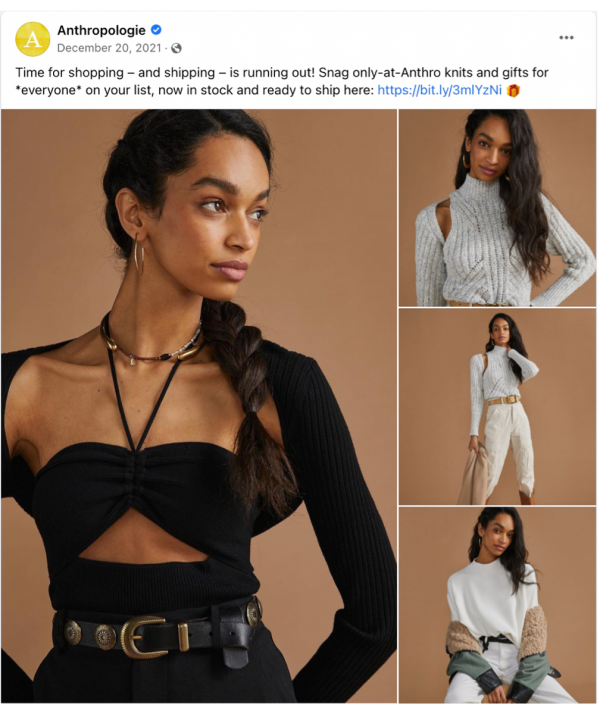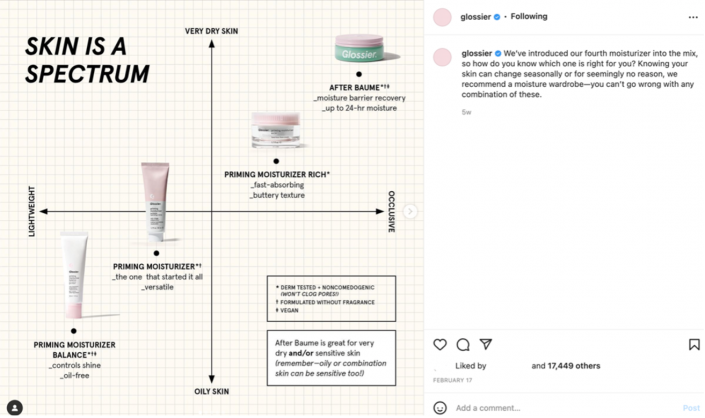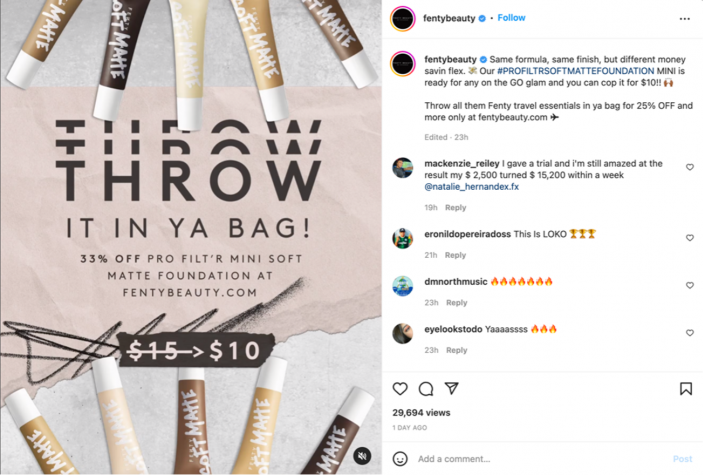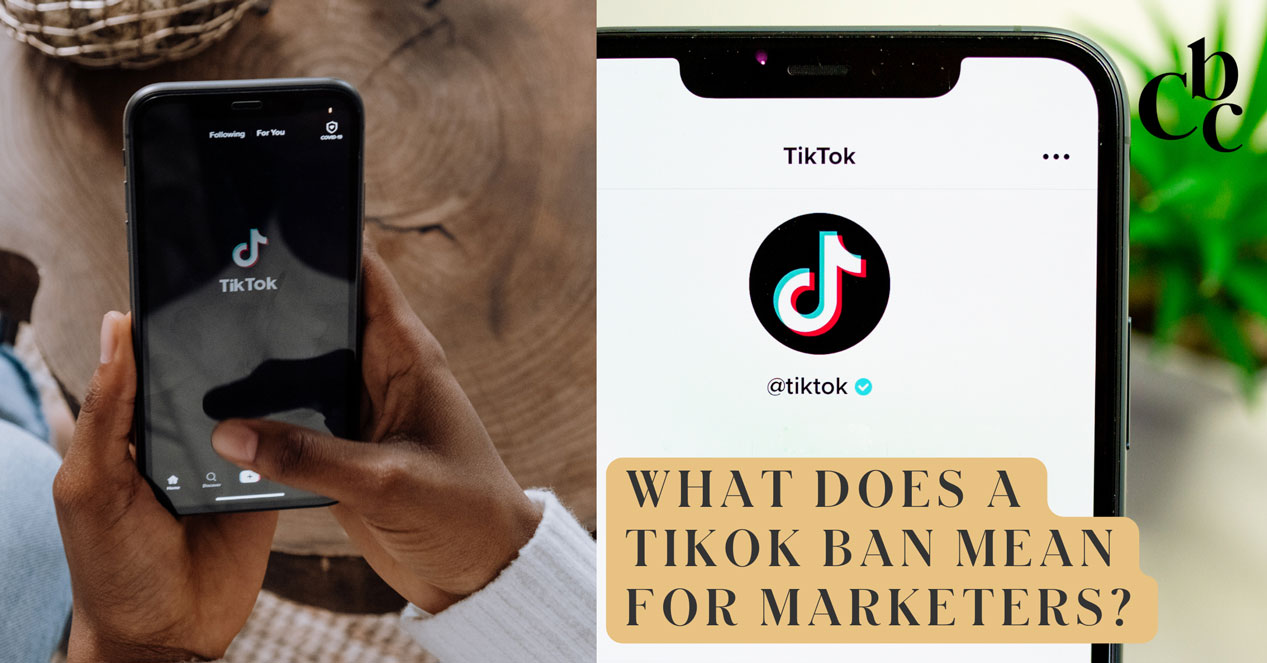Social media is full of noise. There are millions of brands every day attempting to make themselves heard and leave a message that resonates with their audience – it’s important that your brand can break through the babble. Stopping the scroll relies on strong creative and compelling copy; If you have aspirations of attracting a large and loyal brand following, enhancing your team’s copywriting skills should be a top priority.
At CerconeBrownCompany, we’ve helped brands of all industries and sizes enhance their social presence and pull off trendsetting campaigns that have not only grown their online following but have strengthened their relationships with customers as well (aka more sales!) Below, we’ve shared our top tips for ensuring that your social media copy will grab the attention of users quickly and easily.
1. Create FOMO
Have you ever been scrolling through Instagram and stopped to look at a group of people on a beach vacation and thought, “I would do anything to be there right now?”
FOMO, or the fear of missing out, is a psychological phenomenon that can be described as the worry that you are missing out on an amazing experience or product. According to TrustPulse, 60% of people make purchases because of FOMO, mostly within 24 hours.
To infuse FOMO into your social media copy, quite simply show your audience what they are missing out on! An easy way to do this is by collecting testimonials about other customers’ experiences, but you can also do so by creating a sense of urgency with words and phrases like “for a limited time”, “save your spot”, or “time is running out!”
Take the below post from clothing brand Anthropologie for example – they create a sense of urgency by emphasizing that time is running out to make holiday orders, while also highlighting that there is something for everyone at their site. This makes readers realize they are missing out on some amazing gifts for their loved ones…so time to act fast!

Whether you choose to elicit FOMO through peer experiences, exclusive offers, or something else, the key is to make a user feel like your product or service will solve a problem better than any other company can.
2. Simplicity is KEY
You don’t want your audience to struggle trying to understand your copy. In fact, if your copy is too long, uses too much jargon, or doesn’t communicate the value right away – they won’t try. They’ll keep scrolling!
According to Boomerang, messages that are written at a third-grade reading level receive 36% more responses. Social media is something that encourages instant gratification and understanding, so most users don’t have the attention span to read long or wordy social posts. The fewer words you use, the better!
Need help writing more concisely? One exercise social media marketers can practice when faced with long-winded social copy is to delete parts of your post and ask yourself: does it still make sense? Does it still capture the essence of your message? If so, leave it out!
If that exercise doesn’t help you cut down on words, work with your creative team. Remember that you can also use your creative – whether it be a photo, video, GIF, or other type of imagery – help illustrate your message. In fact, your copy and creative should always work together.

Check out the above example from Hismile, a company that sells a variety of teeth whitening products.
This copy is simple and straight to the point – the image shows somebody who is very happy with the Hismile product, and the accompanying copy explains how being like her is easy, it can happen in just ten minutes! It quickly gets to the point and persuades readers to learn more.
3. Be Conversational
Your audience wants to feel like you are talking to them, not at them. When you are writing social media copy, try to use a conversational tone. To do so, avoid using too much jargon but feel free to add in emojis, pop culture references, and other expressions that you’d use in conversation with a friend.
Of course, if your brand’s tone of voice is more serious or if your social media posts require regulatory approval, as if often the case for B2B brands, then you may have to work to find a compromise. However, that doesn’t stop you from creating conversations by asking your audience questions or engaging with them in the comments.

A great example of this is the above Instagram post by beauty brand Glossier. With the introduction of their fourth moisturizer, they knew that some customers would have questions as to which would work best for them. They created an easy-to-understand graphic and addressed in their copy the confusion that can come from their wide array of products.
4. Nail Down Your CTA
Arguably, the CTA, or call to action, is the most important part of your social media copy. A CTA is a brief phrase – written or visual – that asks your audience to perform a specific action.
Nailing down your CTA is essential because attention spans are short – you want to make it obvious to users what you want them to do.
The value of a CTA can be statistically proven – according to SocialPilot, adding a CTA can increase conversion rates by 83%. In general, the most effective way to convert your readers into customers is to simply ask. Like many things in life, “if you don’t ask, the answer is always no!”
Keep in mind, you’ll need to motivate consumers to oblige to your call to action. For example, a tweet that reads “Go to our website to buy our new product” directs user to a next step, but it doesn’t present the value in following through. When drafting calls to actions, ask yourself: “what’s in it for them?”
Take the below example from Fenty Beauty – offering a discount or deal isn’t always necessary, but it is a great example of motivating your users to take the next step. In both their graphic and caption, Fenty Beauty is offering customers 30% off of their mini foundation with the CTA “Throw it in ya bag!” – simple, easy, and direct.

To learn more about writing CTAs that convert, check out our blog.
Differences and Examples for each Social Channel
Something important to note is that your social media copywriting shouldn’t take a “one size fits all” approach; each social platform has unique quirks that call for different practices. Below we share our expertise and tips for optimizing your copy for each platform:
- Make sure your copy directs users to share. Facebook prioritizes content from friends and family over brands; an easy way to increase your reach is to have users share your post to their personal profile. Be inspiring or entertaining in your copy and be sure to include “share” in your CTA.
- Focus on people. Facebook is a place for connecting with friends and family, so posts featuring other people and your community will perform well. We’re not just talking about the photos you collect – incorporate testimonials and use brand ambassadors to help your post stand out.
- Instagram users love a story – incorporate storytelling into your copy to grab their interest. It’s OK to share a longer post on Instagram….as long as your story is a good one!
- On that note, if you’re going to write a long Instagram caption, begin with a strong hook before beginning a long paragraph. Only the first few words of your caption will appear in a user’s feed – think through what will intrigue a user to learn more!
- Include hashtags – they’ll help get more eyes on your post. BUT don’t go overboard. Choose hashtags that are relevant to your post but aren’t so oversaturated with content that yours gets lost in the mix. We recommend looking at hashtags with less than half a million posts.
- Make sure your tone is professional – but not too While LinkedIn is a thought leadership and business-centered platform, we’ve seen a shift in the last few years and, today, LinkedIn’s viral content is conversational, authentic, and inspires dialogue. Find the right balance for your brand!
- Incorporate numbers or statistics – these stand out in a body of text and can quickly grab a reader’s attention.
- The most important aspect of Twitter to keep in mind is the short character count – you only have 280 characters to get your point across.
- Twitter is primarily a platform to find news, so think of your tweet as a news headline or billboard! Get your main point across first in a few words.
TikTok
- Keep it short! TikTok is a video platform, so your audience isn’t going to be reading a long caption, they’re going to be watching the video. The character limit for TikTok is 300 characters, so make sure you only include any important supplementary information.
- TikTok captions are a great place to instruct viewers to do anything that you didn’t mention in the video (this could be something like “watch until the end” or “click the link in our bio to learn more”).
Social media offers brands a great opportunity to connect with their audience and share updates in real-time – but it’s what you make of it. By implementing these tips for your next social media post, you’re sure to see more reach, engagement, and conversions with your content.
Looking for a partner that can help you nail down your copywriting strategy? We’d love to chat.










